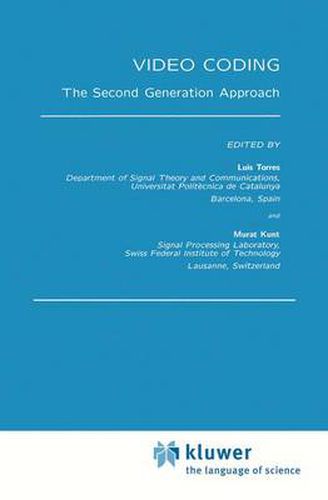Readings Newsletter
Become a Readings Member to make your shopping experience even easier.
Sign in or sign up for free!
You’re not far away from qualifying for FREE standard shipping within Australia
You’ve qualified for FREE standard shipping within Australia
The cart is loading…






This title is printed to order. This book may have been self-published. If so, we cannot guarantee the quality of the content. In the main most books will have gone through the editing process however some may not. We therefore suggest that you be aware of this before ordering this book. If in doubt check either the author or publisher’s details as we are unable to accept any returns unless they are faulty. Please contact us if you have any questions.
In recent years there has been an increasing interest in second generation image and video coding techniques. These techniques introduce new concepts from image analysis that greatly improve the performance of the coding schemes for very high compression. This interest has been further emphasized by the future MPEG 4 standard. Second generation image and video coding techniques are the ensemble of approaches proposing new and more efficient image representations than the conventional canonical form. As a consequence, the human visual system becomes a fundamental part of the encoding/decoding chain. More insight to distinguish between first and second generation can be gained if it is noticed that image and video coding is basically carried out in two steps. First, image data are converted into a sequence of messages and, second, code words are assigned to the messages. Methods of the first generation put the emphasis on the second step, whereas methods of the second generation put it on the first step and use available results for the second step. As a result of including the human visual system, second generation can be also seen as an approach of seeing the image composed by different entities called objects. This implies that the image or sequence of images have first to be analyzed and/or segmented in order to find the entities. It is in this context that the book presents three main approaches as second generation video coding techniques: segmentation-based schemes; nobel based schemes; and fractal based schemes.
$9.00 standard shipping within Australia
FREE standard shipping within Australia for orders over $100.00
Express & International shipping calculated at checkout
Stock availability can be subject to change without notice. We recommend calling the shop or contacting our online team to check availability of low stock items. Please see our Shopping Online page for more details.
This title is printed to order. This book may have been self-published. If so, we cannot guarantee the quality of the content. In the main most books will have gone through the editing process however some may not. We therefore suggest that you be aware of this before ordering this book. If in doubt check either the author or publisher’s details as we are unable to accept any returns unless they are faulty. Please contact us if you have any questions.
In recent years there has been an increasing interest in second generation image and video coding techniques. These techniques introduce new concepts from image analysis that greatly improve the performance of the coding schemes for very high compression. This interest has been further emphasized by the future MPEG 4 standard. Second generation image and video coding techniques are the ensemble of approaches proposing new and more efficient image representations than the conventional canonical form. As a consequence, the human visual system becomes a fundamental part of the encoding/decoding chain. More insight to distinguish between first and second generation can be gained if it is noticed that image and video coding is basically carried out in two steps. First, image data are converted into a sequence of messages and, second, code words are assigned to the messages. Methods of the first generation put the emphasis on the second step, whereas methods of the second generation put it on the first step and use available results for the second step. As a result of including the human visual system, second generation can be also seen as an approach of seeing the image composed by different entities called objects. This implies that the image or sequence of images have first to be analyzed and/or segmented in order to find the entities. It is in this context that the book presents three main approaches as second generation video coding techniques: segmentation-based schemes; nobel based schemes; and fractal based schemes.